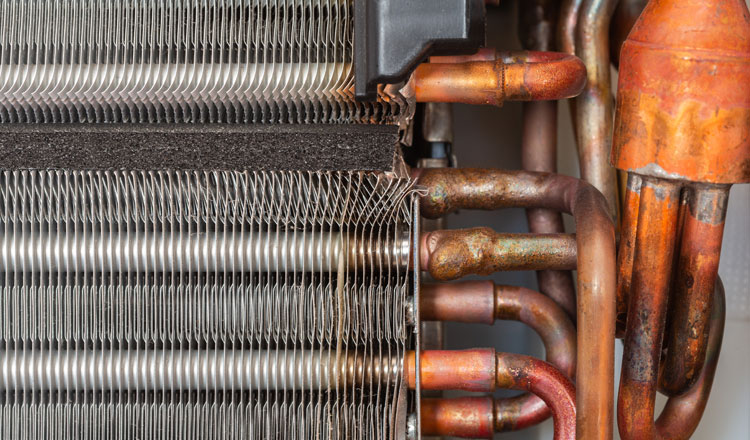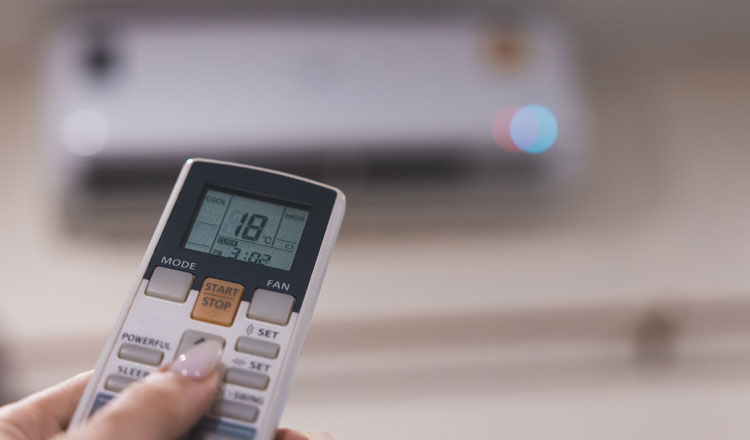How Does Air Conditioning Work?
As a homeowner, you know just how key air conditioning is when it comes to keeping you and your family cool during the summer months!
A Brief History of Air Conditioning
Air conditioning as we know it today began in 1902 when a man named Willis Carrier invented the first modern electrical air conditioning unit to solve a humidity problem at a printing company in Brooklyn, New York. His air conditioning system controlled both temperature and humidity, laying the foundation for modern HVAC technology.
In the 1920s, the first residential air conditioning systems were available to homeowners, but it wasn’t until the 1950s and 1960s that air conditioning became more affordable to everyone.
Today, air conditioning is an essential part of any home, with more than 90% of American homes having some type of A/C system installed.
What Are Air Conditioners?
Air conditioning is an HVAC (heating, ventilation, and air conditioning) system that’s designed to remove heat and humidity from indoor spaces such as homes and businesses. While air conditioners don’t actually create cold air, they remove heat from indoor air and push it outside.
The process of air conditioning involves circulating refrigerant through a closed-loop system that absorbs heat from inside your home and releases it outdoors.
Modern air conditioning systems also filter and circulate air, to help improve your home or business’s indoor air quality while also maintaining consistent temperatures throughout your space.
Related: How to Get Your Air Conditioning System Ready for the Summer
3 Key Parts of an Air Conditioning System

Compressor
This powerful pump pressurizes the refrigerant and circulates it throughout the system. The compressor takes low-pressure, cool refrigerant gas and compresses it into high-pressure, hot gas, which is then sent to the condenser coil.
The compressor requires the most energy and is typically the most expensive part of the system to replace. The compressor is located in the outdoor unit of your A/C system.
Condenser Coil
The condenser coil is located in the outdoor unit and is the heat rejection component of the system. It contains the hot, pressurized refrigerant that flows from the compressor.
The fan blows the air across the condenser coil so that the refrigerant releases its heat to the outside air and condenses from a gas back into a liquid state. Then, the now cooled liquid refrigerant then travels back toward the indoor unit.
Evaporator Coil
The next major part of your air conditioning system is the evaporator coil, which is where the actual cooling occurs. The liquid refrigerant enters the evaporator coil and expands rapidly, causing it to evaporate and become very cold.
As warm indoor air is blown across these cold coils, the refrigerant absorbs heat from the air, cooling it down before it’s circulated back into your living spaces.
How the Air Conditioning Process Works

Okay, now let’s talk about how the air conditioning process works:
- Warm indoor air is drawn into the A/C unit through return ducts which then passes over the cold evaporator coil.
- Heat absorption occurs as the refrigerant in the evaporator coil absorbs heat from the warm air, causing the refrigerant to evaporate from liquid to gas.
- The cold air is blown back into your home through the system’s supply ducts, which lowers your home’s indoor temperature.
- Low-pressure refrigerant gas travels from the evaporator coil to the outdoor compressor unit through refrigerant lines.
- Compression happens as the compressor pressurizes the refrigerant gas, raising its temperature significantly.
- Heat rejection takes place when the hot, pressurized gas flows through the condenser coil, where outdoor air removes the heat.
- Condensation occurs as the refrigerant cools and changes back from gas to liquid form.
- Pressure reduction happens when the liquid refrigerant passes through an expansion valve, dropping pressure and temperature.
- The cycle repeats as the cool, low-pressure liquid returns to the evaporator coil to absorb more indoor heat.
Related: Air Conditioning Maintenance Tips You Should Know
Central Air Conditioning Systems
Central air conditioning systems are modern A/C systems that are designed to cool entire homes through a network of ducts that distribute conditioned air to every room.
These systems typically share ductwork with your home’s heating system, making them an efficient choice for year-round climate control. The main components are split between an indoor unit (containing the evaporator coil and air handler) and an outdoor unit (housing the compressor and condenser coil).
Central air systems offer even temperature distribution, quiet operation, and the ability to filter and dehumidify air throughout your entire home. They’re ideal for larger homes and provide excellent energy efficiency when properly sized and maintained.
Contact Us for Professional Air Conditioning Services

Keep you and your family cool with a quality A/C installation! For more than 60 years, Modern HVAC has proudly served Appleton, Neenah, Menasha, Kimberly, Darboy, Greenville, and surrounding areas throughout the Fox Cities.
At Modern HVAC, our team provides professional air conditioning solutions – from installations/replacements, to repairs, to maintenance, to installing a programmable thermostat.
Our skilled heating and cooling specialists are Carrier-certified professionals with the knowledge and experience to handle any cooling system. From central air units and ductless mini-splits to heat pumps, we have the expertise needed to troubleshoot and maintain you’re A/C system’s peak performance throughout the hottest months of the year!
A/C Articles:
- Signs You Need a New Air Conditioning Unit
- 10 Air Conditioning Myths That are Costing You Money
- Heating & Cooling Guide: What to Know About HVAC Systems
- How Often Should You Change Your HVAC Filters?
- HVAC Maintenance Tips for Pet Owners
- The Differences Between a Heat Pump and Central A/C
- 10 Things to Check Before Calling an HVAC Technician
- How Weather Affects Your HVAC System
- How To Prevent Bugs From Coming Through Air Conditioner Vents

